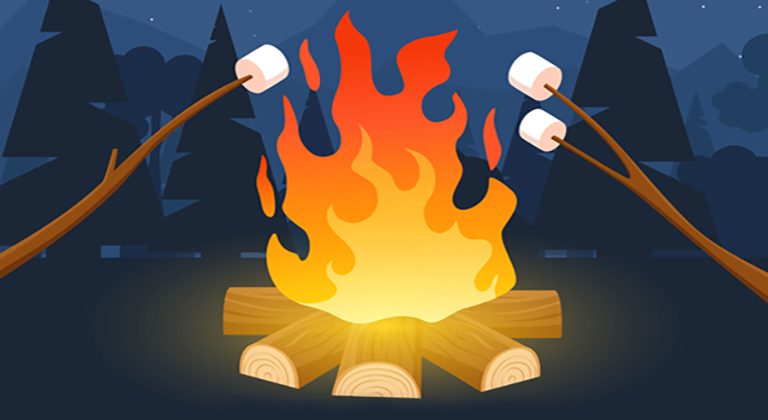Some years ago I published a book called New York City of Trees. On facing pages of photographs and text, it presented portraits of fifty-five trees in the city’s five boroughs. One was of a Callery pear in the Chelsea neighborhood of Manhattan. A mid-sized tree covered in white blossoms each spring, glossy green leaves in the summer, and a mass of orange-yellow leaves in the fall, the species is a familiar sight in cities across the US. At the time of my book’s publication it was the second most widely planted species in Manhattan, after the honey locust.
Growing on the east side of Eleventh Avenue between 25th and 26th Streets, this particular tree stood out for the way its rounded crown, framed by the brick building behind it, glowed in a shaft of late afternoon sun filtered between a post office building and a sanitation depot across the street. I first saw it while walking with my wife, Katherine, in late April 2002, and in that aura of sun the leaves shone with the fresh kind of green that new leaves have in the spring. At Katherine’s suggestion, a few days later I retraced our steps and took a picture. I came back again to make portraits of the tree in the fall, winter, and early spring.
I had recently left a job at the New York City Parks Department to try to make a living as a freelance photographer, particularly of trees. The four photographs of the Callery pear became something of a signature series for me. Friends sent me their own pictures of the tree taken from different angles and e-mailed me about things they had observed when they passed by—a number of plastic bags caught in its branches; a bicycle chained to its trunk, missing gears and tires; a phoebe singing in an upper branch; a street vendor selling used books on a blanket in its shade.
As I noted in my book, one day in 2008 I drove by and the Callery pear was gone. From friends at the Parks Department I learned that it had been cut down at the request of the Metropolitan Transportation Authority as part of the planned extension of the 7 subway line to Hudson Yards, then in development. Three new buildings necessary for the subway would be built on the lot behind the tree. The Parks Department had approved the removal in exchange for a restitution payment of $22,500, which would cover the cost of planting thirty new trees elsewhere in the neighborhood.
During the years that followed, as I watched heavy equipment move in and transform the lot, I found myself rationalizing the loss. The city has procedures to calculate replacement values for trees in cases of construction conflicts, and extending the subway to Eleventh Avenue was hardly a bad thing. Callery pears are not even considered a long-lived or sustainable species. Introduced from East Asia in the early twentieth century and widely planted as ornamental street trees, they have weak branches that break easily under stress and a habit of spreading quickly in wild places, crowding out other plant life. They are now considered an invasive species in several states; most American cities actively discourage planting them. I did not think there was anything I could have done about the one on Eleventh Avenue and decided that the point was to appreciate its uniqueness in memory—and in photographs.
I had pretty much accepted this idea when, six years ago, I happened to walk by the spot again. Instead of the proposed three buildings, it turned out that the MTA had constructed just one—a five-story, windowless cement structure on the northern side of the lot. Occupying the southern side was a sculpture by Mark di Suvero. The Callery pear—which had been growing roughly in front of where the sculpture now stood—would not have been in the way of the MTA building; with protections in place, construction vehicles could have accessed the site without disturbing it. The tree had, it seemed to me, been cut down for nothing.
*
New York City’s urban forest contains about seven million trees, distributed along streets, highways, and shorelines; in parks and cemeteries; in the backyards of private homes; in genuine forests; and in numerous other places, such as the edges of parking lots. City law codifies a system for removing any of these trees before the start of a new construction project—and then for replacing them with trees of an equivalent value in or near the original location after the project’s completion. “Any person that intends to remove any tree” within the jurisdiction of the Parks Department commissioner, according to Title 18-107 of the New York City Administrative Code, needs to obtain a permit and pay a fee “sufficient to cover the cost of replacing any tree proposed to be removed.” At a minimum, the law says, the new tree should “equal one caliper inch of replacement tree for each caliper inch of tree removed,” but the Parks Department has leeway to set a higher replacement value if one seems merited—and it usually does. To establish those values the agency has to follow guidelines “set forth in the most recent edition of the guide for plant appraisal.”
The International Society of Arboriculture (ISA) has been publishing and regularly updating its Guide for Plant Appraisal, now in its tenth edition, since 1957. At 170 pages, it offers formulas and standards to help arborists establish monetary values for trees lost to storms or for “inventory, tree preservation, insurance, casualty loss, income, accounting, tax, finance, and litigation purposes.” Years ago, in consultation with the New York chapter of the ISA, the Parks Department modified the formulas to arrive at its own Tree Valuation Protocol, which sets a tree’s monetary value “based on its size (as measured by the cross-sectional area of the trunk) and then adjusts for the tree’s condition, species, and location.”
The Parks Department’s Tree Valuation Protocol, which it calls “both a science and an art,” is one of the strictest in the country. The base standard for most municipalities is a wood-for-wood replacement for the species involved: a twelve-inch diameter pin oak, for instance, is said to be equivalent to four three-inch diameter pin oaks. Forest scientists and tree advocates speak of New York City’s protocol with admiration because it goes beyond such equivalencies to try to assess how trees actually contribute to the places where they grow. It takes into account not only the condition of a tree and the suitability of its species for the location but also ecological, aesthetic, and social factors: “pollution reduction, stormwater mitigation, promotion or inhibition of flora and fauna…form and structure, opportunities provided for recreation, and contributions to social cohesion and community revitalization.”
But despite the respect the city’s protocol garners and the higher replacement fees it imposes, tree removals such as that of the Callery pear on Eleventh Avenue continue unabated. In most cases planners and developers simply factor New York City’s higher removal costs into projects from the beginning as part of the price of doing business. And no amount of tree replacement math can substitute for just leaving a tree where it is.
Nobody knows how many trees are removed in New York City each year. Just 53.5 percent of trees in the city fall under the protection of the Parks Department, and even in the agency no single database compiles information about all the trees being worked on or removed at any given time. The rest of New York’s trees fall under the jurisdiction of other city agencies, New York State, the federal government, and especially private property owners, who only have to acquire permits for work on trees in public rights of way like sidewalks. In a 2022 report on the state of New York City’s urban forest, the Nature Conservancy concluded that “segmented ownership and limited data” make it “difficult to analyze the urban forest as a whole…or to arrive at an exact count of trees in the city from which to derive a more complete understanding.”
Some idea of the scale of annual tree losses can be gleaned by considering the number and variety of projects that regularly lead to removals: road widenings, building development, public housing improvements, utility work, flood-control initiatives, park reconstructions, urban renewal projects, and requests by individual property owners for curb cuts and construction access. For example, despite protests from advocates, 991 healthy, mostly mature trees are being removed from East River Park in Lower Manhattan as I write so that the park can be rebuilt as a floodwall. With apparently less public controversy, 450 trees, again most of them healthy and mature, were recently removed from the Red Hook Houses public housing project in Brooklyn for another flood control project. More than a thousand—mature oaks, London planes, and honey locusts in excellent condition, with trunk diameters greater than twenty inches—were removed as part of the widening of the Van Wyck Expressway in Queens.
In its report the Nature Conservancy offered a more comprehensive view of tree losses and gains around the city by using satellite images to compare tree canopy cover between 2010 and 2017, the longest period over which such information was then available. The results showed that during the period a gross gain of 9,730 acres was offset by a loss of 6,477 acres, for a net increase of 3,253 acres—from 20.36 percent of the city to 22.04 percent. Gains in some neighborhoods were, however, undercut by losses in others. The distribution of trees in the city, the Conservancy found, reflected “inequity across communities.” Although a portion of the overall gain during the period could be attributed to Mayor Michael Bloomberg’s highly publicized Million Trees project, which ran from 2007 to 2015, the Nature Conservancy estimated that as much as 86 percent of the increase actually came from the natural growth of existing trees. Some of the overall loss, meanwhile, was due to a single natural disaster, Hurricane Sandy, which the Parks Department estimated had damaged or downed approximately 11,000 street and park trees.
It is meaningful that the canopy did grow overall during the period the study tracks. But it grew a lot less than it would have without the loss of those 6,477 acres—thousands of healthy, larger trees, covering an area roughly seven and a half times the size of Central Park, in a pollution-filled, ever-hotter city with an inequitable distribution of resources. The Conservancy worries that “even in cases where replacement is required, it can take decades to recover the associated canopy and benefits of larger, old trees that are removed.”
*
We ought to worry, too. With stronger tree retention requirements in place and different design standards, many proposed tree removals could, for one thing, be avoided with relatively little difficulty. For most projects, the technical problems trees pose are minor inconveniences. If it were standard practice to keep trees in place and protect them rather than cut them down and replace them later, and if builders and designers took the time to work out protocols for doing so, more of the city’s canopy could be preserved—and more of it could grow.
The MTA’s request to remove the Callery pear from the sidewalk on Eleventh Avenue to construct what I later found out to be a subway ventilation building is a case in point. The extension of the 7 line, of which the vent building was a part, was itself part of a bigger deal arranged by Mayor Bloomberg to encourage the project that came to be known as Hudson Yards. As has been well documented, with Bloomberg’s prodding two developers, the Related Companies and Oxford Properties, agreed to build a skyscraper-supporting platform over the Long Island Railroad’s Eleventh Avenue train yards. In total $6 billion in state and city concessions ended up going to the development; among them was the subway extension, providing direct public transportation to the building complex that the Related Companies now advertises as “the largest private real estate development in the history of the United States.” If the Parks Department had required that the Callery pear be left standing, I’m pretty sure the MTA could still have figured out a way to install what turned out to be that single vent building on the site. The Callery pear was the only tree along the Eleventh Avenue side of the block; part of the southern and the full northern half of the block were open—and access from the side streets was free as well. With roots, trunk, and crown protected by wood barriers, and of course with proper attention, the tree could still be growing there.
But even if removal restrictions were as burdensome as developers sometimes claim, it would still be worth putting a high priority on preserving as many healthy, mature trees as we can. Design and construction practices in New York City tend to operate on the assumption that growing things in general and trees in particular are inanimate objects, like lampposts or guardrails or even buildings and bridges, that can be removed, replaced, added, subtracted, rearranged, “put in,” “taken out,” and generally made to fit into an idea of order that is not an order in which growing things grow. In the alchemy of New York City’s current tree replacement procedures, trees can be changed into money and money back into trees. In the process the trees themselves become costs to be covered or fees to be paid. Once the fee is paid the tree can be removed without loss.
But this is false. Mature, healthy trees that have been growing in one place for a long time have concrete, measurable advantages over the saplings usually planted to replace them. They are far better at cooling the city in the summer, absorbing pollution and excess rainwater, baffling sound, sequestering carbon, even creating oxygen. Neighborhoods with a larger number of mature trees are healthier than those with fewer. Meanwhile, as the Nature Conservancy points out, replacement trees take decades to begin to provide benefits on a par with those of the original trees, and the arboreal churning allowed by the city’s current replacement policies only slows down attempts to increase its tree canopy and cool its neighborhoods, even as the world heats up. To suggest that the replacements are in some sense equivalent to the originals only confuses neighbors into thinking that what is put in will somehow make up, in their lifetimes, for what has been taken away.
Mature, healthy trees also have more intangible effects. Simply by its presence on the side of a street, in a park, along a highway, or even in an airshaft, a tree provides benefits to people in a city that nothing else can offer, not even a sculpture by Mark di Suvero: the sounds of birds chirping outside one’s window, the unusual shapes and locations of branches and trunks as they lodge themselves in one’s mind, unconscious connections between certain trees and emotions during periods of one’s life, or an expanded sense of time in the presence of living things older than oneself. These effects are mostly unconscious until one day you happen by and see that the tree is gone.
*
In 1970 the New York City Landmarks Preservation Commission designated a southern magnolia in Bedford Stuyvesant, Brooklyn, as a city landmark, citing the anomaly of its survival so far north of its usual range. It is one of only two trees in the city ever to have been formally designated a landmark. (The other, the country’s first Weeping Beech, in Flushing, Queens, died around 2000.) Rare and lovely, with extraordinary white flowers each June, the Magnolia at 677 Lafayette Avenue still thrives today, nearly a century and a half since its original planting, protected from removal in a planned development by its landmark status.
New York has quite a few extraordinary trees that are especially large or old or botanically unusual, or that are associated with famous figures or moments in the country’s history, against whose protection few would argue. Revolutionary-era elms in Washington Heights and Greenwich Village, gigantic tulip trees in Staten Island and Queens, a ginkgo associated with an Underground Railroad association in Bedford Stuyvesant: these are just a few of the 120 trees around the city that the Parks Department has designated as “great.” But it is not just such officially designated trees that have value. As recent research has shown, trees grow best in forest systems, and the benefits of a grove of trees far outweigh those of any single one.
In New York City, forest systems take unusual forms. Genuine forested landscapes such as those in Inwood Hill Park, the New York Botanical Garden, and Alley Pond and Pelham Bay Parks, with their connected roots and layers of mycelium-filled duff, are by far the most efficient at sequestering carbon and combating pollution. But as the Nature Conservancy’s report highlights, what we call the urban forest is a distinctive kind of ecosystem that also includes trees planted along streets, around ballfields, at private houses, in new developments, in community gardens, and even taking root spontaneously in vacant lots and on the rooftops of abandoned buildings.
In many cases the trees in question belong to vastly different species that might not grow together in the wild. And yet just by surviving together for a number of years in a particular spot in the city they will have joined—may even have become central to—complex and unique networks of plant, animal, and human life. A lone oak on a street corner may not sequester as much carbon as it would among others of its kind in a forest, but its shade is of disproportionate value to those who shelter under it in the summer. These systems, idiosyncratic and unquantifiable, should be valued as wholes, and to survive as wholes they must be protected in their parts.
Simply putting saplings, no matter how climate-resilient, in place of healthy, full-grown trees is counterproductive to increasing the benefits of urban forest systems. Consider the question of carbon emissions. Study after study has shown that mature trees are exponentially more effective at absorbing carbon from the atmosphere than are the saplings typically planted to replace them. One study determined that a single large tree can absorb as much carbon in a year as an entire mid-sized tree will have absorbed in its lifetime. When you consider not only the loss of the carbon-sequestering power when a mature tree is removed but the added carbon footprint of raising, transporting, and planting the replacement saplings (not to mention the carbon footprint of cutting down the original tree and chipping it up), many years must pass before saplings can grow large enough to begin to make up for the loss of the tree they have replaced.
New York City’s tree law specifies how soon replacement trees must be planted after projects are completed. But as far as I know the replacement formula does not account for the number of years that sites could remain treeless during extended projects. If it did factor in the loss of a given tree’s benefits between the time of its removal and the time of its replacement, as well as the estimated time that it would actually take the new trees to grow big enough to approximate their predecessors’ contributions, then the beginnings of a more realistic tree replacement formula might emerge. The psychological effects of sudden treelessness on neighbors and the health effects of unchecked wind and hotter, louder streets—not to mention of unabsorbed pollution from traffic during the treeless interim—are harder to quantify but should also be included in the formula.
In the document that explains its valuation methods, the Parks Department includes tables for foresters to rate a given tree according to its expected longevity and canopy size and its potential contributions to the place where it grows. Trees of some species are assigned less value than others; Callery pears, for example, rate relatively low. It would seem, in theory, that including such ratings as a part of tree valuation would strengthen the urban forest by causing smaller or shorter-lived trees—such as Callery pears—to be replaced over time with new, longer-lived ones, such as oaks or ginkgos. In practice, however, the effect is to sanctify the more immediate removal of perfectly healthy, if less perfect, trees that may still contribute to their surroundings for many years in a human lifetime.
A more beneficial scheme would be to keep the mature trees whenever possible, no matter what their ratings, and plant high-rated saplings in empty spaces nearby to augment them. Eventually, when the mature trees fail or enter senescence, the saplings will have had a chance to grow to maturity and start serving as meaningful replacements. The result would be a stronger, faster-growing urban forest system. If the new trees are chosen for future climate conditions—hickories, oaks, dawn redwoods, bald cypress—then that system will also be more resilient.
To take the measure of how limiting these abstract longevity ratings and financial formulas can be, I often think of the Survivor Tree at the World Trade Center memorial site in downtown Manhattan. Now designated a Great Tree, this Callery pear, its roots snapped and branches broken, was removed from the wreckage about a month after September 11, 2001, and transplanted to a Parks Department nursery in the Bronx where it was nurtured back to health over the next nine years. Replanted among 420 swamp white oaks at the World Trade Center Memorial site in 2010, this representative of a weak-limbed, brittle-branched invasive species—near the bottom of the Parks Department’s published hierarchy—is now more than thirty feet tall and grows happily there still.
*
Efforts to reduce tree removals in New York City will not succeed until the law adjusts to demand them. To ensure that projects factor preservation and accommodation—rather than removal and replacement—into the cost of doing business will require changes to the administrative code. Those changes are especially necessary now that the pressing need for more affordable housing is leading the city to relax certain construction regulations.
Some of these relaxations are welcome developments: as the city moves to a congestion pricing model for cars in parts of Manhattan and encourages the use of public transit to combat carbon pollution, it makes sense to remove a requirement that new developments provide sufficient parking for all residents. For those same reasons, however, it hardly makes sense to let developers remove pollution-absorbing trees from a sidewalk in the name of temporary construction efficiency, or to design buildings with footprints too expansive to accommodate trees already growing in front of a building site. Requiring space for crown and roots, trees are incompatible not with buildings (which can be designed to give them space) but with the practice of maximizing real estate values by bringing building footprints right up to the edge of a sidewalk.
Other US cities have by now moved ahead of New York in legislating tree protections. In 2019, declaring tree canopy a health issue affecting everyone within its borders, Cambridge, Massachusetts, extended municipal protections to any healthy tree with a diameter greater than six inches on private or public property, regardless of species. In 2021 Nashville created a panel of representatives from different city agencies with a mandate to review proposed tree removals on city land “for compliance with the replacement standards,” “pursue retention where feasible,” and “provide a recommendation of an alternate plan.” Seattle passed new regulations in 2023 that extend protections to trees on private property and specify levels of protection for different sizes of trees and types of projects.
In 2022 New York City Council Member Christopher Marte tried to strengthen the city’s tree protections by sponsoring a law that would have made it a misdemeanor to remove or harm a “heritage tree” (i.e., a tree with a circumference greater than one hundred inches) on public or private property. That law failed, but the following year the City Council took a step in the right direction by passing Local Law 1065, which requires a city agency selected by the mayor to develop an Urban Forest Plan that would “expand the tree canopy from the current 22 percent coverage to 30 percent coverage” and recommend strategies to mitigate urban forest loss.
The task of developing such a plan fell to the Mayor’s Office of Climate and Environmental Justice. In early February I spoke with Paul Lozito, a deputy director at MOCEJ, who told me that the agency expects to have a draft ready for public review by the summer. When I asked whether the draft will recommend changes to city law to help reduce tree removals, and whether it will extend protections to trees on private property, he said that they are considering all options. In the meantime, MOCEJ, in partnership with the City Parks Foundation, has been conducting a series of lively community listening events around the five boroughs to solicit ideas and concerns from tree advocates. Advocacy organizations such as the Forest for All Coalition—a group of around 150 organizations convened by the Nature Conservancy to advocate for the city’s forest—and the Regional Plan Association have all proposed ways to monitor and expand the canopy; in its 2022 report the Nature Conservancy made a point of calling for the city to “better prevent removal of healthy, larger trees on public lands.” None of these groups, however, has gone on record to propose legal changes as particular or extensive as the law that Christopher Marte had introduced to protect larger, older trees.
In the interest of moving the conversation forward, let me therefore propose four changes the City Council could make to the Administrative Code to reduce unnecessary tree loss and better protect New Yorkers from the effects of a warming planet.1 First, the city could go ahead and extend protections to cover not just the 53.5 percent of trees growing on land under the Parks Department’s jurisdiction but also the 35 percent of trees on private property. In the interest of fairness, as Cambridge has done, fees for permitted tree replacements on private property could be reduced for homeowners whose incomes fell below a certain level. Any legal challenges to these expanded protections could be met on the grounds that the benefits of trees are shared by a community—preserving them is a matter of protecting the health of the neighborhood as a whole.
Second, the Council could create an independent Tree Board, similar to the Landmarks Preservation Commission, with a mandate to help designers and builders develop plans to retain established healthy trees—and with the power to deny permit applications for those that don’t. One of the crucial weaknesses of the city’s current tree law is that its designated enforcer, the parks commissioner, is a political appointee who serves at the mayor’s discretion. Any projects known to have mayoral backing—and most development projects generally do—are difficult for a parks commissioner even to seem to oppose. Many larger projects, from Hudson Yards to the East River Park renovation, originate in the executive branch. Creating an independent agency with disapproval powers would help the proposers of projects look beyond removal and replacement as an automatic response.
Third, the council could more unequivocally require the retention and accommodation of existing trees by requiring developers to get the Tree Board’s approval before removing any of three types of trees: what I would call established trees (trees with diameters greater than ten inches) growing within fifteen feet of a curb; working trees (any given tree with a diameter greater than twenty inches, or a group of six or more whose average diameters are greater than ten inches), and heritage trees (those with diameters greater than thirty inches). If the Tree Board grants approval, the applicant would follow the current rules governing tree replacement. If the board requests changes, the applicant would need to work with them to redesign the plans. In the interest of fairness, currently allowed caps on the Parks Department’s tree replacement requirements in certain residential zoning districts would be eliminated.
Finally, the council could require public notification of proposed tree work involving established, working, or heritage trees, and open a fourteen-day comment period during which affected neighbors could submit their concerns about proposed removals to the Tree Board. Along with this, the Parks Department could be required (and given the necessary funds) to establish a comprehensive, publicly accessible, easily searchable database and map of proposed, upcoming, and completed tree work on public and private property, including work that is part of its own capital projects. These measures would both keep neighbors abreast of proposed changes and create a single collecting point for data about tree work and tree removals.
*
Reducing tree loss is ultimately a matter less of taking on arduous new work or paying steeper costs than it is of changing one’s state of mind. If politicians, planners, designers, engineers, and property owners knew from the beginning that retaining trees was often a requirement, not just something you could pay a fee to avoid, they would make plans accordingly. From my own observation, whether of large capital projects such as the renovation of East River Park or of development projects that involve local street trees, alternative designs and construction practices could allow many trees to remain.
This has been shown to work right here in New York. After a developer announced plans to construct condominium apartments in a parking lot occupied by a famous old American sycamore—a designated Great Tree—on Corlear Avenue in Kingsbridge, neighbors rallied to save the tree. Whether because it had always intended to or because it deferred to the intense community pressure (and articles in The New York Times and the Riverdale Press), the developer ended up designing the building with a U-shaped courtyard to accommodate the tree, and even went so far as to name the building the Sycamore Court Condos.
Now the building’s residents live among the tree’s leaves and hear birds in its branches. In summer visitors pass through a shady courtyard on their way to and from the lobby and the medical offices on the ground floor. The building superintendent waters the tree in dry periods and the neighbors who originally fought to save it watch over it and make sure it stays healthy. And because it is a designated Great Tree, the Parks Department keeps an eye on it, too.
The Callery pear on Eleventh Avenue was not a designated Great Tree, and the only constituency it could be said to have had was the neighbors, gallery-goers, and post office and sanitation workers who passed by it every day. Nearly two decades since its removal, hardly anyone probably remembers it now. But I do, and since 2019 I have gone back every couple of years to see what is happening on the block where it grew.

Benjamin Swett
The site of the Callery pear, 2021

Benjamin Swett
The site of the Callery pear, 2023

Benjamin Swett
The MTA’s completed vent building on 11th Avenue, carrying an advertisement for a planned development, 2023
By 2021 the di Suvero sculpture was gone and the lot was blocked off by orange barrels and plastic barriers. The spot on the sidewalk where the Callery pear had grown was occupied by heavy stacks of construction supplies. By 2023 the entire lot, including the vent building on the north side, was fenced off as a new construction site. Around the vent structure stretched an advertisement for a new “Arts Building” to be erected along the block.
From the computer rendering it was apparent that the windowless vent building would be incorporated into the new development, whose glass front came right up to the edge of the sidewalk, leaving no space either for the lush crown of my remembered Callery pear or for its roots. Inside the building, in the developer’s imagination, people in various styles of dress went about their business on different floors in well-lit office spaces. A few trees grew in planters on the roof. Out front along the street, however, not a single tree grew.





























 English (US) ·
English (US) ·